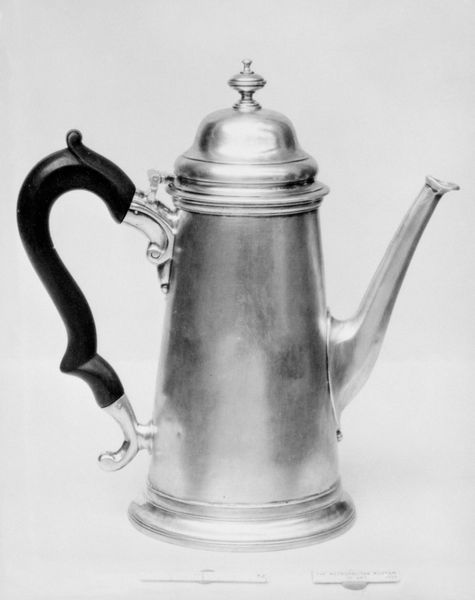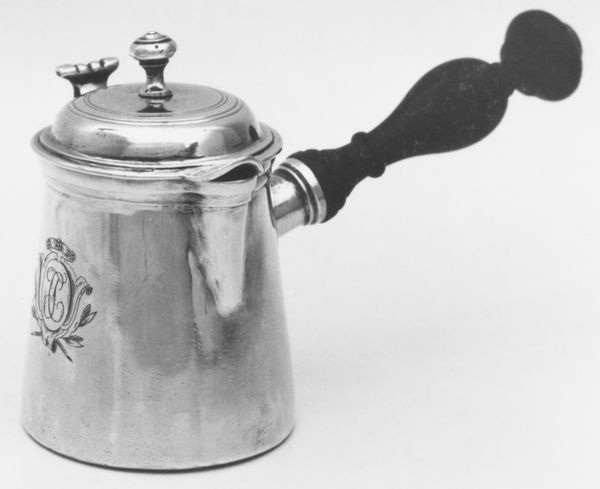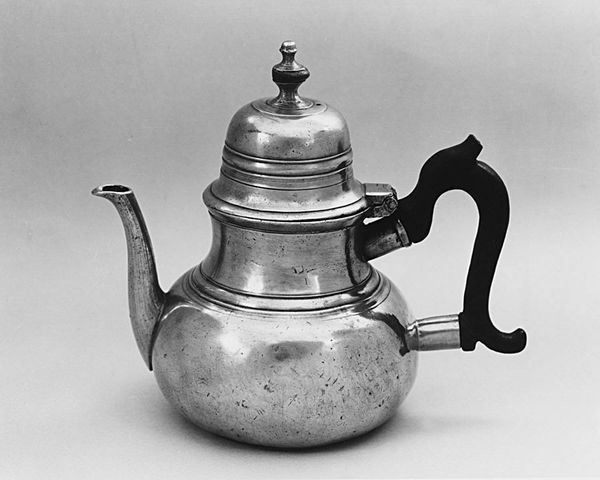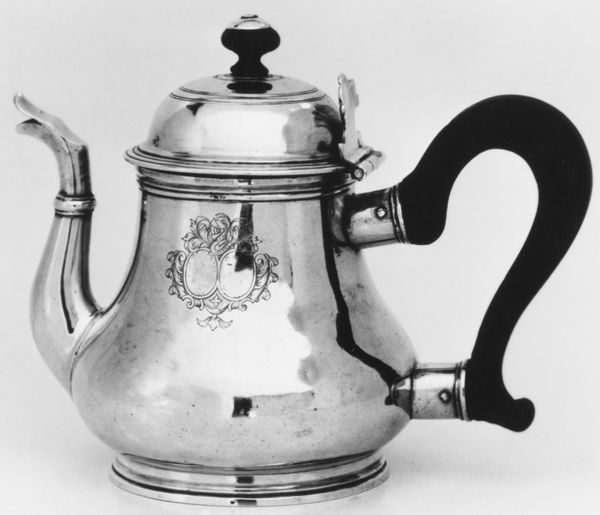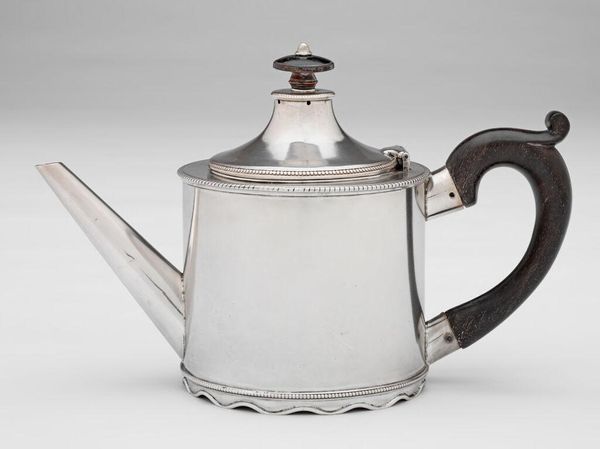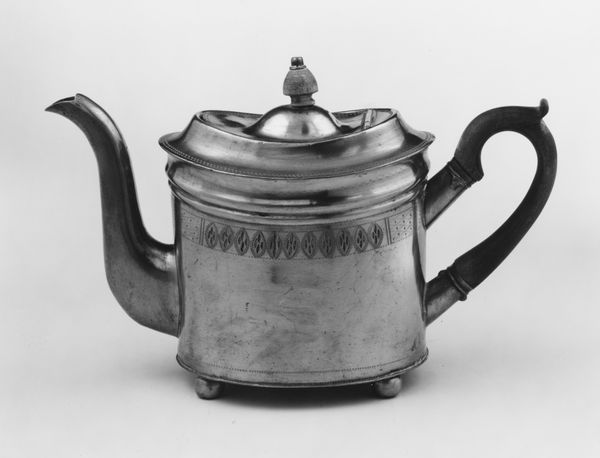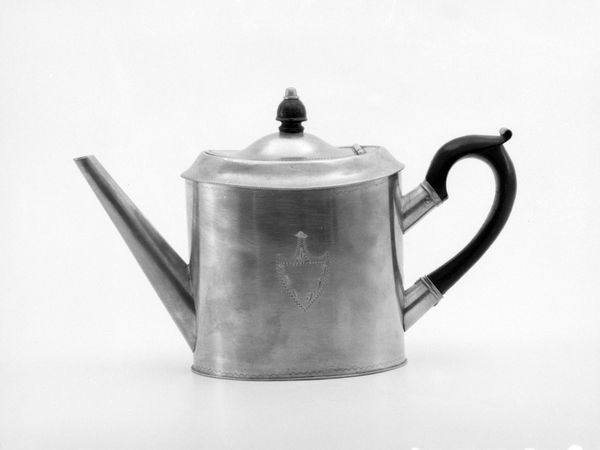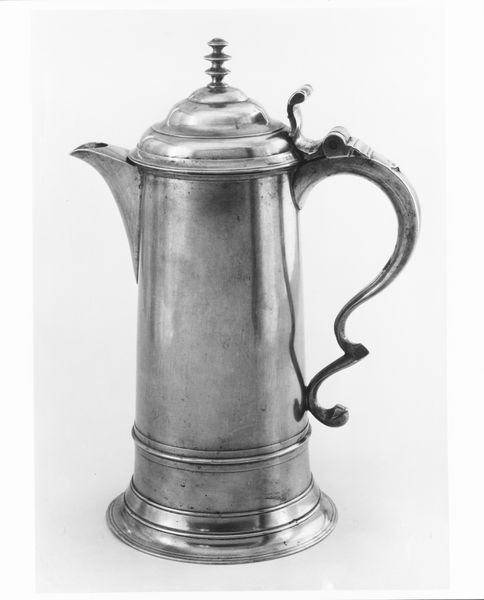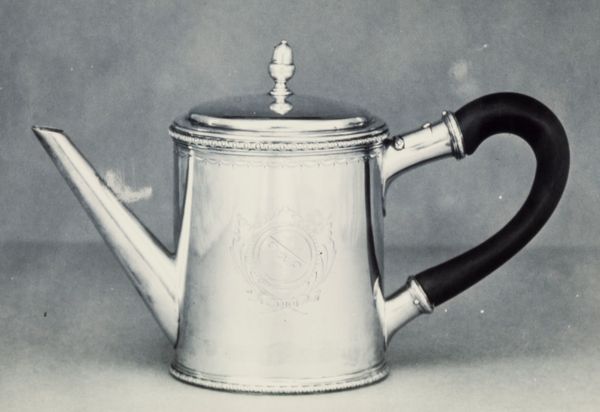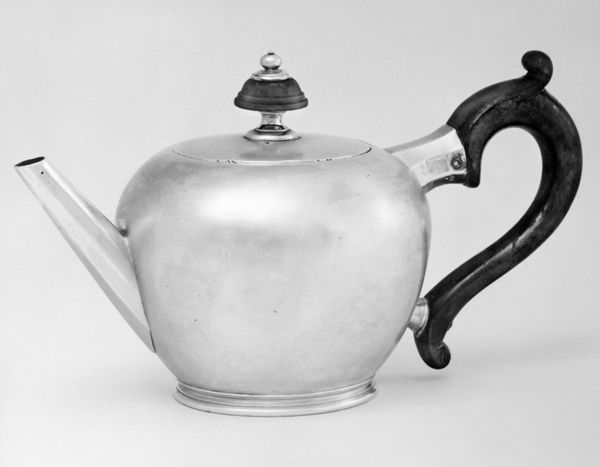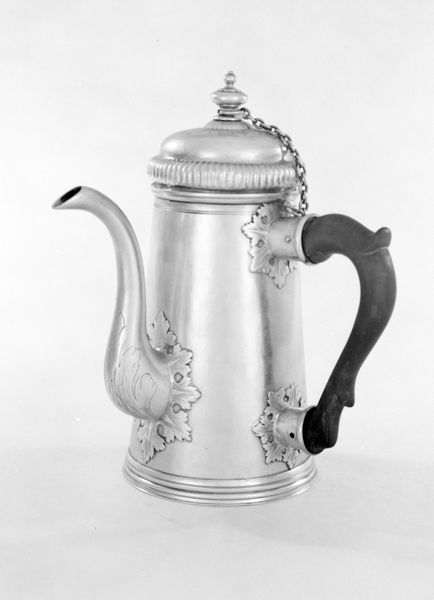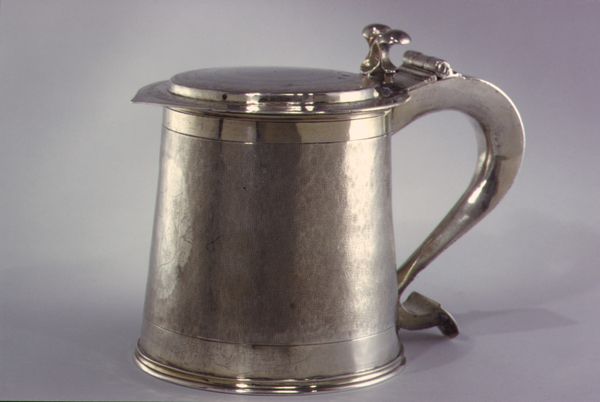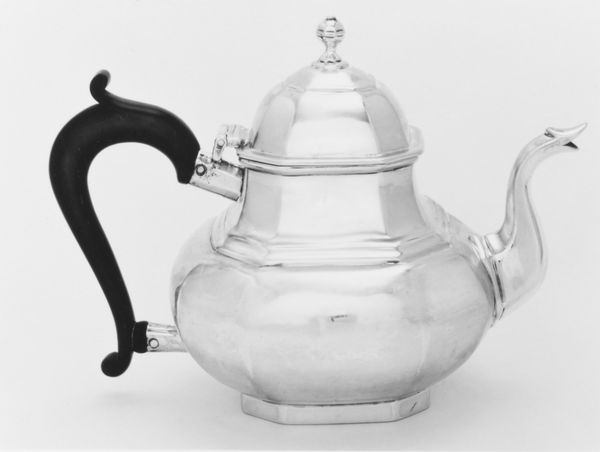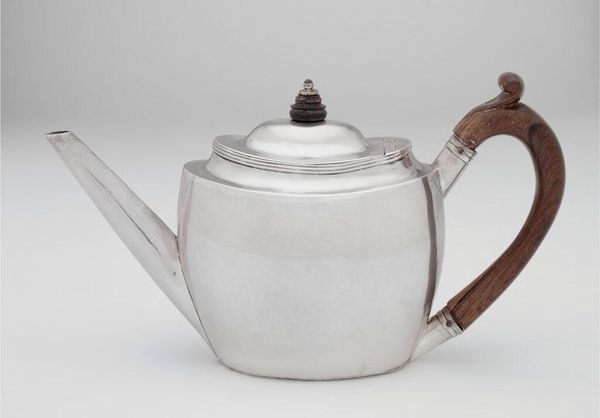
silver, metal, sculpture
#
16_19th-century
#
silver
#
metal
#
sculpture
#
decorative-art
Dimensions: Overall: 4 × 6 1/2 in. (10.2 × 16.5 cm)
Copyright: Public Domain
Editor: So this teapot, dating from 1801, it's a shiny silver metal, with a dark handle. The bright silver against the black makes it somehow austere... almost Puritan. What symbols do you see in it? Curator: Well, beyond its obvious function, consider the very ritual of tea. It's about hospitality, but also status, and access to global trade networks. What does it tell you about cultural memory when it’s recontextualized in a museum? Editor: Good point! It sort of loses its intended function, and it becomes a representation of what it *was*, like a signifier. Curator: Precisely! And the material itself – silver – speaks volumes. Silver often represents purity, luxury, and enduring value, often displayed in European and American households for their perceived status. Notice also the spout's curvature juxtaposed with the angular handle. Editor: That's interesting. I was focusing on the contrast between the silver and handle, and not the spout. How would you interpret those shapes? Curator: The curvature speaks to the elegance of leisure, of a pouring motion, while the sharp angle is, in itself, industrial and modern even today. Editor: So it's a tension? Between traditional luxury and... emerging modern ideals, perhaps? Curator: Precisely! It is not merely a vessel but a time capsule of colliding symbols. And consider the 'button' on top... What about the repetition there? It invites touch but prohibits actual use. Editor: Wow, I hadn't even noticed that little finial! It’s more complicated than I first thought! I really just saw a simple teapot. Curator: But now, you perceive not just its design but its symbolic density. Every detail sings! Editor: Definitely gives me a lot to consider next time I look at decorative art.
Comments
No comments
Be the first to comment and join the conversation on the ultimate creative platform.
